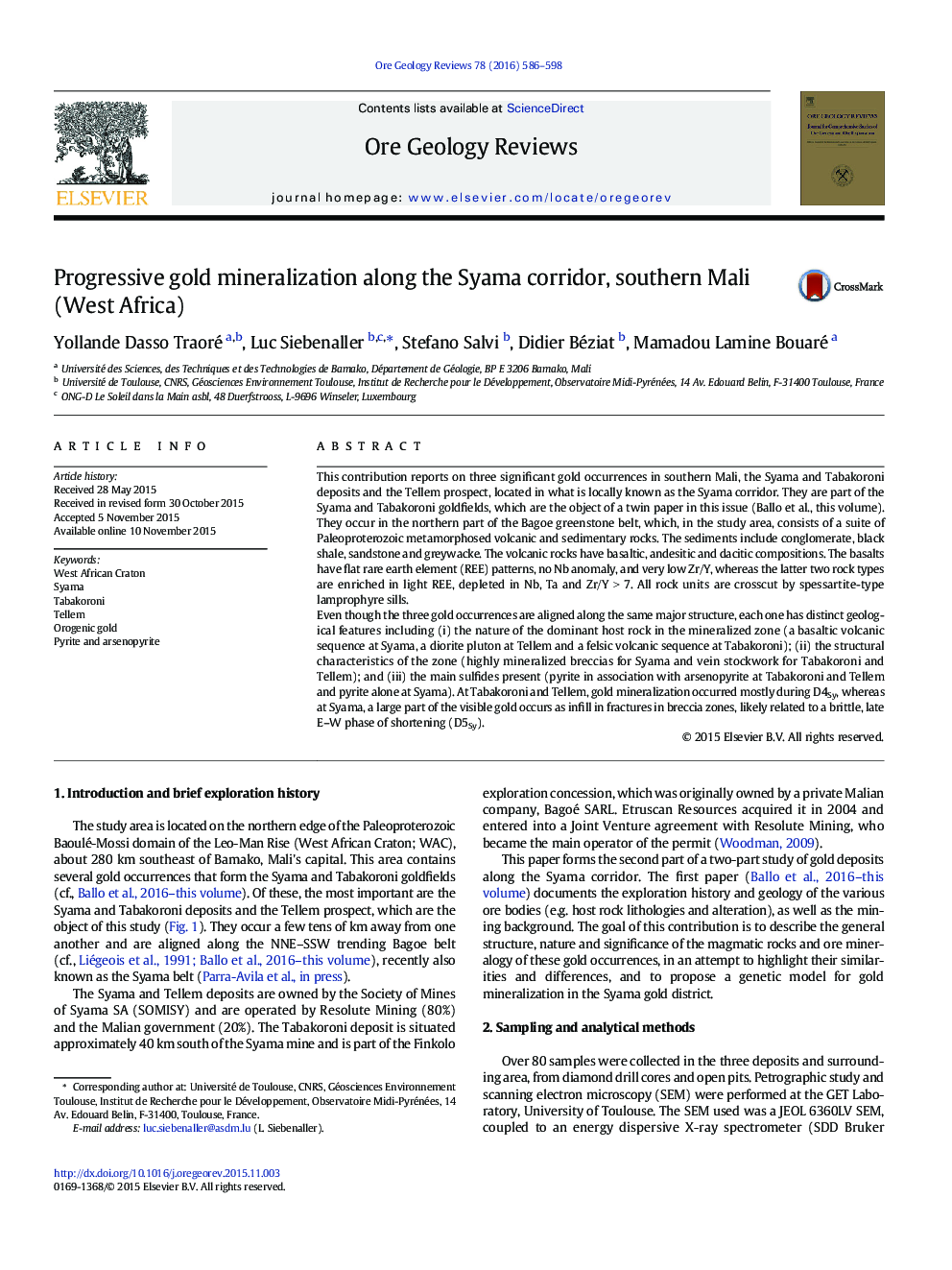| کد مقاله | کد نشریه | سال انتشار | مقاله انگلیسی | نسخه تمام متن |
|---|---|---|---|---|
| 4696871 | 1637228 | 2016 | 13 صفحه PDF | دانلود رایگان |
• Comparison of three different Au deposits along the Syama greenstone belt
• Gold mineralization is associated with two distinct phases of crustal shortening.
• Pyrites and arsenopyrites rich in invisible gold (up to 100 ppm)
• Spessartite-type lamprophyre: late- to post-orogenic precursor to Au mineralization
This contribution reports on three significant gold occurrences in southern Mali, the Syama and Tabakoroni deposits and the Tellem prospect, located in what is locally known as the Syama corridor. They are part of the Syama and Tabakoroni goldfields, which are the object of a twin paper in this issue (Ballo et al., this volume). They occur in the northern part of the Bagoe greenstone belt, which, in the study area, consists of a suite of Paleoproterozoic metamorphosed volcanic and sedimentary rocks. The sediments include conglomerate, black shale, sandstone and greywacke. The volcanic rocks have basaltic, andesitic and dacitic compositions. The basalts have flat rare earth element (REE) patterns, no Nb anomaly, and very low Zr/Y, whereas the latter two rock types are enriched in light REE, depleted in Nb, Ta and Zr/Y > 7. All rock units are crosscut by spessartite-type lamprophyre sills.Even though the three gold occurrences are aligned along the same major structure, each one has distinct geological features including (i) the nature of the dominant host rock in the mineralized zone (a basaltic volcanic sequence at Syama, a diorite pluton at Tellem and a felsic volcanic sequence at Tabakoroni); (ii) the structural characteristics of the zone (highly mineralized breccias for Syama and vein stockwork for Tabakoroni and Tellem); and (iii) the main sulfides present (pyrite in association with arsenopyrite at Tabakoroni and Tellem and pyrite alone at Syama). At Tabakoroni and Tellem, gold mineralization occurred mostly during D4Sy, whereas at Syama, a large part of the visible gold occurs as infill in fractures in breccia zones, likely related to a brittle, late E–W phase of shortening (D5Sy).
Figure optionsDownload as PowerPoint slide
Journal: Ore Geology Reviews - Volume 78, October 2016, Pages 586–598
